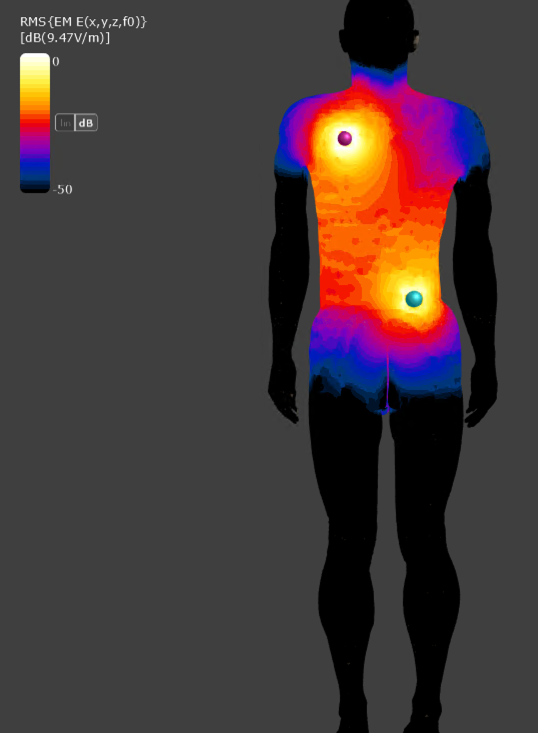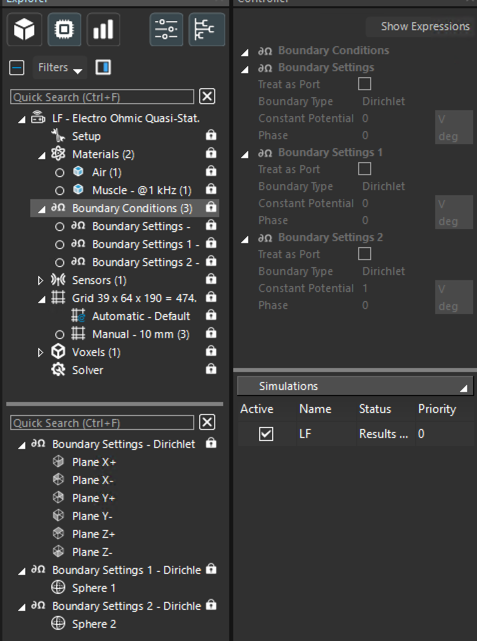High Field Values at Extremities
-
Hi Everyone,
I'm currently learning Sim4Life and working through a simple use case involving electrical stimulation applied around the chest area. I'm using one of the ViP anatomical shells with muscle material properties assigned uniformly to the entire body.
After running the simulation and analyzing the electric field, I noticed unexpectedly higher voltage spots at the extremities-specifically the head and hands as shown in the figure below.
Does anyone know what might be causing this? Is it a numerical artifact, meshing issue, or something to do with the solver settings or boundary conditions?

-
What does your simulation setup look like? Sources, boundary conditions, frequency, etc?
Without any information, we can only guess what you are simulating.Hi @bryn ,
I wanted to share more context about my simulation setup to help troubleshoot or clarify the results I’m seeing.
Solver: Electro Ohmic Quasi-Static
Frequency: 1000 Hz
Model: Billie whole-body shell (material: Muscle from the library)
Electrodes: Two electrodes placed on the chest areaBoundary Conditions:
Dirichlet boundary automatically applied to the external bounding planes
Dirichlet boundary applied to both electrodes, set as “Treated as Port”Simulation Combiner – Channel Parameters:
Electrode 1: Amplitude = 500 V, Phase = 0°
Electrode 2: Amplitude = 0 V, Phase = 0°Does this configuration look correct?
Thanks
-
I asked chatgpt. Maybe the "treated as port" at the 0V electrode setting is wrong if you also have 0V at the boundary of the bounding box, but I am no expert on this solver.
https://chatgpt.com/share/682f5452-ea2c-8010-9a88-81c7eb89c36fHow are you modeling the background material?
-
I asked chatgpt. Maybe the "treated as port" at the 0V electrode setting is wrong if you also have 0V at the boundary of the bounding box, but I am no expert on this solver.
https://chatgpt.com/share/682f5452-ea2c-8010-9a88-81c7eb89c36fHow are you modeling the background material?
Hi @bryn,
I think you’re right. The issue appears to be related to the boundary conditions on the outer bounding box. I changed the boundary to a flux(0) condition, and that resolved the problem with the localized high field values at the extremities. Thank you!

